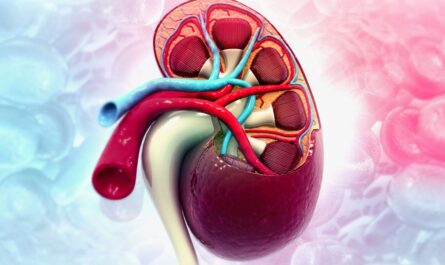What is it?
A Patient Centered Medical Home (PCMH) is a model for provision of primary care that is patient-centered, comprehensive, team-based, coordinated, accessible, and focused on quality and safety.
Core Attributes of a PCMH
Personal Physician
Each patient has an ongoing relationship with a personal physician who leads a team that takes responsibility for the overall care of the patient.
Physician-Led Team
The personal physician leads a team of individuals from various clinical and administrative staff who actively complement the personal physician’s work. This team meets the needs of patients.
Whole-Person Orientation
The PCMH addresses all the patient’s health needs simultaneously and seamlessly, whether the issues are related to biology, behavior, or the social determinants of health. Patient Centered Medical Home This approach reduces fragmentation and enhances coordination of care.
Coordinated Care
This type of coordination helps to ensure that the patient’s needs and preferences are central to the delivery of high-quality care.
Quality and Safety
Clinical processes and decisions are guided by the best evidence available. Quality and safety are continually assessed and improved through use of tools such as data registries and performance reports.
Enhanced Access
Enhanced access is offered through systems such as open scheduling, expanded hours, and new options for communication between patients, their personal physician, and practice staff.
Payment Reform
Payment appropriately recognizes the added value provided to patients who have a patient-centered medical home. It reflects the resources required for things such as care coordination and enhanced access. Payment also recognizes the need for ongoing quality improvement activity.
Implementation of the Patient Centered Medical Home Model
Multiple entities across the country have developed PCMH standards and criteria. Popular standards include those from the National Committee for Quality Assurance (NCQA) and the Joint Principles of the Patient-Centered Medical Home established by major primary care professional associations and consumer groups.
The NCQA standards focus on five key areas – enhancing access, planning and managing care, providing self-care support, tracking and coordinating care, and measuring and improving performance. Practices must collect evidence to demonstrate that they are meeting multiple standards within these areas to receive NCQA recognition as a PCMH.
Joint Principles set out core elements that should define the medical home, in particular the delivery of primary care with an orientation toward the whole person. Additional functions include care coordination, enhanced access, and a systems-based approach to quality and safety.
Benefits of PCMH for Patients and Physicians
Health Outcomes Improve
Evidence from multiple sources indicates that the PCMH can improve clinical outcomes. Better outcomes include lower all-cause mortality rates, fewer hospital admissions and readmissions, fewer emergency department visits, and improvements in chronic disease control metrics such as blood pressure and hemoglobin A1c levels.
Care Experience Improves
Studies show that PCMH patients experience greater satisfaction with their care delivery and service experiences. Patients report improved access to care, enhanced communication with providers, and better care coordination between visits. Physicians also experience greater career satisfaction in PCMH roles.
Costs Are Lower
The PCMH model has demonstrated cost savings potential. Savings result from reductions in both inpatient and ambulatory healthcare utilization. Estimates suggest the PCMH may reduce total cost of care by 5–15% depending on case mix and population served. This drives down healthcare costs for payers.
Physician Burnout Declines
A key feature of the PCMH is bringing in other team members to help support care delivery responsibilities traditionally borne by physicians. This optimized staffing has been shown to free up physician capacity and significantly reduce odds of burnout over time compared to physicians working in non-PCMH practices. Team-based care enhances wellness for physicians as well.
Challenges and Ongoing Work
Despite growing evidence of the benefits, some challenges remain in fully adopting the PCMH model. These include:
– Upfront investments required to transform infrastructure and workflows that require support through payment reform.
– Short-term losses are possible as savings accrue over years of population health management.
– Not all patients engage as desired in self-care or shared decision making.
– Workforce shortages exist, especially in underserved areas, to fully staff interprofessional teams.
– Data and health information technology must integrate seamlessly to enable care coordination and quality improvement activities.
– Large practices face different challenges than small, independent practices in transforming to the PCMH model.
The patient centered medical home represents an evidence-based model for strengthening primary care and population health management. With ongoing refinement and support, it shows great potential to achieve the triple aim of improving experience of care, improving health of populations, and reducing per capita healthcare costs.
*Note:
1.Source: Coherent Market Insights, Public sources, Desk research
2.We have leveraged AI tools to mine information and compile it
About Author - Money Singh
Money Singh is a seasoned content writer with over four years of experience in the market research sector. Her expertise spans various industries, including food and beverages, biotechnology, chemicals and materials, defense and aerospace, consumer goods, etc. LinkedIn Profile



